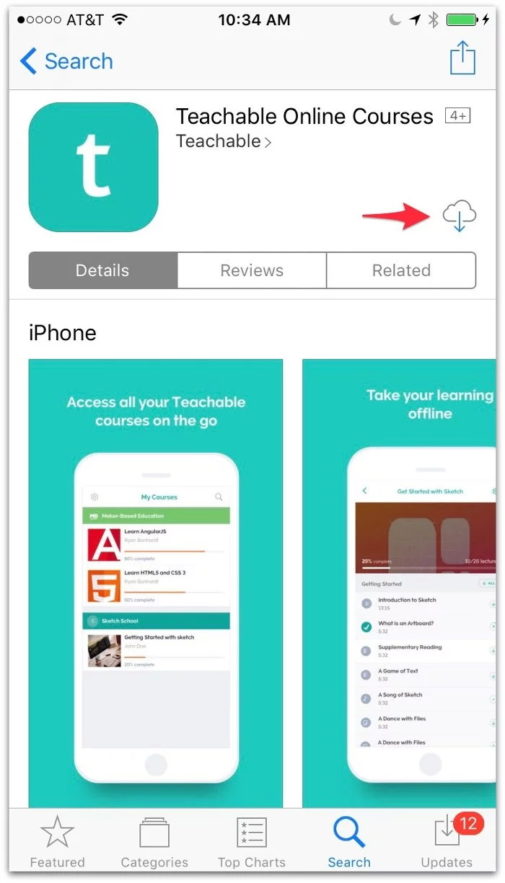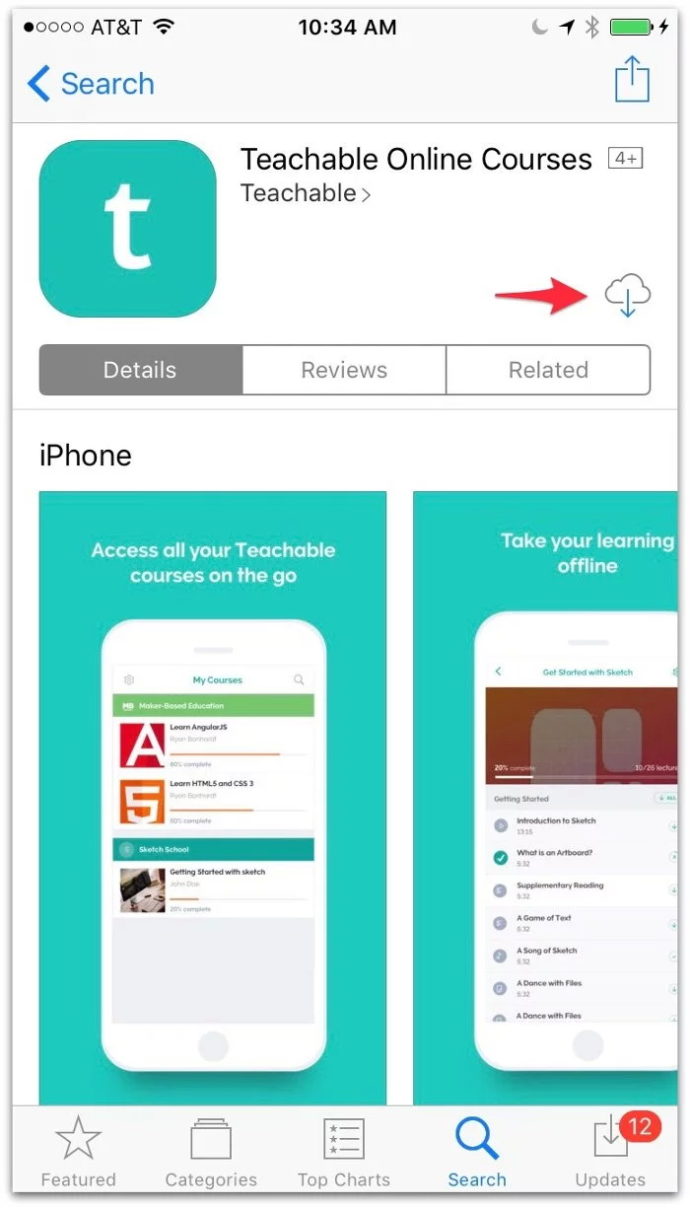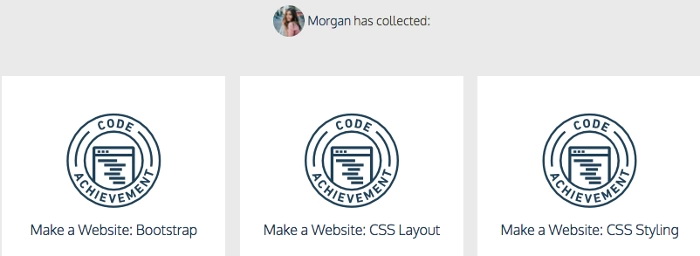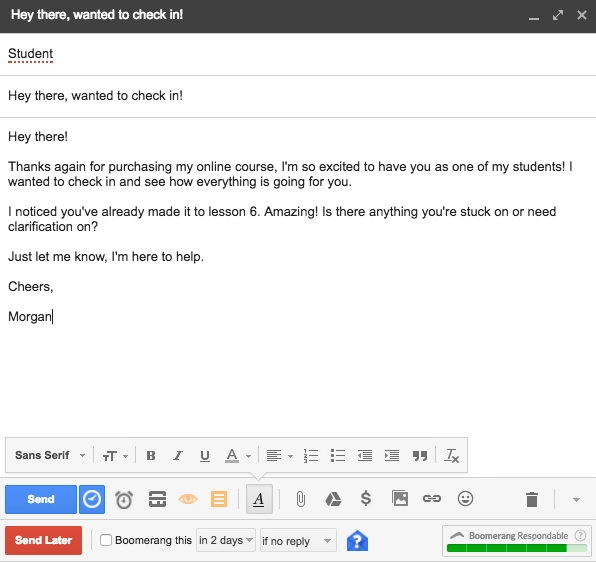7 ways to increase completion rates and help your students finish your online course


Getting people to buy your course is the first big battle, and then you have to figure out how to help your students actually finish your course. Studies show that completion rates for online courses are only around 40% at best.
It may feel like as soon as your customers enroll in your course, it’s out of your hands. You’ve gotten them this far and whether they procrastinate or not is purely up to them. But, you might want to reconsider.
Who’s finishing?
Students who actually finish the courses they buy are more likely to be satisfied with their purchase, because it’s likely the only way they’re going to see the results you promised and reach their goals. They’ll also be more likely to buy another course from you and recommend your programs to their friends, too.
That kind of word of mouth marketing is valuable to any business, and by going the extra mile and making sure that your students are successful in your online course, you’ll build goodwill and make a lasting impression.
But it’s not easy to fake. Most advertising is easy to accomplish yourself—setting up Facebook ads? Do it yourself or hire a freelancer. Creating a promo video for YouTube? It takes an afternoon.
But word of mouth advertising requires an authentic relationship with your customers, and it takes time to build up.
Beyond the monetary reasons for improving your course completion rates, don’t you want your students to take advantage of all the work you put into your course?
Why students don’t finish online courses
Before we talk about how to get your students to finish your online course, it’s important to understand the reasons why they aren’t finishing your course in the first place.
Now, different course creators will ultimately find that there are different blockers common among their students, but here are a few of the most common reasons we see students stalling.
1. They get busy
This is the most common and one of the most difficult to combat. We’ve all been there: life gets in the way and your priorities shift. Even your most enthusiastic students may have curve balls thrown at them that keep them from finishing your online course.
We’ll talk about the best ways to combat this problem later in the post.
2. They aren’t satisfied
Maybe your course isn’t necessarily what they thought it was going to be. If they had a certain idea of what your course was going to entail and it didn’t meet expectations, they may simply cease to progress.
This isn’t always your fault. Even with the clearest marketing people are prone to projecting what they want your course to be onto their understanding of what your course actually offers.
With that said, if you find that this is the case for most of the people dropping off you might want to reevaluate how you’re marketing your online course.
3. They have gotten what they needed from your online course
Some students may buy a course with the intention of not finishing it because they were really only after a certain section.
You may find that people already know some of what you’re teaching. There is nothing you can do about that, but it’s not something to worry about. They’re not abandoning your course, they’re simply only watching the videos they’re most interested in.
4. They realize there is no magic pill to get results
At times, people can often have high expectations and believe that buying one online course will solve all of their woes. Online courses can equip your audience with the knowledge and tools they need to succeed. But, at the end of the day, they still have to put in the work themselves.
When people realize that, they might get disenchanted and give up.
5. They get stuck along the way
Other times, some may be slowly working through your course but are prone to abandoning it for months at a time when they get stuck along the way.
It’s discouraging to not see progress, and it’s even more discouraging to seemingly have all the tools you need to succeed in front of you and still fail.
If you see that your students are nearly all falling off at the same point in your course, it might be because there’s a bigger obstacle than they’re equipped to handle.
But why are YOUR students getting stuck?
You don’t have to guess why your students are dropping off—you can ask them. Consider setting up a survey and sending it to students after they’ve been enrolled in your course for a certain amount of time. Try to find out what worked for them, what didn’t, and why they completed the course or didn’t. A simple Typeform or Google Form should do the trick!
How to increase completion rates for your online course
Now that we understand why people aren’t finishing your online course, we’re more equipped to increase your course completion rates with the following strategies. You can choose a strategy that speaks to you, or mix and match a few of them.
1. Offer a supportive online community
Creating an online community on a platform like Facebook or Slack is a great way to help your students not only connect with each other but also connect with you.
If you create weekly threads or chats where people can share their wins and progress, they’ll be incentivized to come back each week and show off.
But they don’t just want to brag—they also want to hear from you. Chances are, the people who buy from you are likely looking up to you as an authority in your niche and would jump at the opportunity to engage with you in a private community.
Congratulations are in order
Make sure that you congratulate students on their wins and engage with them in the community. It’ll encourage them to have someone they admire (you!) celebrating with them.
Furthermore, an online community offers a sense of camaraderie and collaboration. Instead of directing your students to email you every time they have a question, they can turn to your online community instead. They’ll want to come back to the group for each other, not just for themselves.
If you’ve got a large enough class, you may find that other students are able to answer questions before you even see them. This not only takes some of the burden off of you, but it also can serve as a valuable resource that increases the overall value of your course.
See it in action:


A big draw to Melyssa Griffin’s Blog Hive was access to her private Facebook group. She’s since rebranded the course and launched a new group for the updated course, but while the group was active, members asked questions and offered feedback daily. Melyssa regularly engaged too.
2. Incentivize finishing your online course
People love feeling like they’re special and winning something, so adding an extra bonus for your students who finish your course can keep them on track.
Now, you don’t have to offer anything huge or extravagant—try a free download or a coupon code for another one of your online courses.
That said, the higher-value the bonus, the more likely it is to motivate students to finish. A one-on-one phone call where they get to pick your brain, is more enticing than a free download.
If you’re more the competitive type, you can also make it a game. Reward the first three who finish with something special. Perhaps everyone gets to join in on a weekly group coaching call once they finish, but your top three finishers get 3 one-on-one calls.
For some students, the possibility of winning something is enough to send their determination into overdrive.
3. Encourage them to learn on the go
Students might feel like they don’t want to be tied to their computers for eight hours while they work through your course. Make sure that they know they can learn on the go, away from their desks.
Encourage your students to download Teachable’s iOS app. (Consider linking to it in your welcome lesson or welcome email, for example.)
The app makes on the go learning easy and accessible and puts your course at their fingertips during moments where they’d otherwise be losing time, like a commute or a kids’ soccer practice.
The Teachable App allows students to :
-
View course content and stream native videos
-
Download course content to view later offline
-
Complete lessons and sync their progress with other devices


In 2016, 30.2% of Teachable students accessed Teachable courses from their mobile device, and 4.5 million students accessed a Teachable school using an iPhone, specifically. This trend holds up across the industry.
To engage students using the app and learning on the go, you can make it fun. Encourage your students to send you pictures of them taking your course on mobile and feature the craziest and coolest examples on your social media. (i.e., if someone has your course pulled up on their phone and snaps a picture in a hot air balloon. Anything cool like that.)
Sharing on social also lets potential students know that they can access your course anywhere and provides social proof from all the cool people already taking your course.
For more on the iOS app, check out our Knowledge Base article on making your course available in the app.
4. Host live Q&As (depending on the format of your course)
If you are looking to help your students keep up, you can do live Q&A’s each week covering a different topic from you course.
For example, if you have eight lessons within your course and you’re hoping that each week your students finish two of those lessons, plan four weeks of live Q&A’s, each week covering the next two lessons.
Your students want to engage with you and be able to pick your brain in a real-time setting, so this incentive can go a long way in keeping your students engaged with your online course.
This doesn’t have to be a huge time investment and you don’t need to pull out your professional lighting kit or backdrops. Your students will appreciate seeing the “real you” just casually chatting with them for an hour.
Structure
How you structure your calls is up to you. You can have a round robin where everyone gets to ask a question, or more of a free-for-all. The size of your class will determine which is best.
Make sure to ask some leading questions to get the Q&A going, too. Figure out what their blockers are and encourage them to be candid in letting you know exactly where they got stuck.
If you want to go above and beyond, schedule them for different times each week—that way no matter what your students’ schedules are there will likely be a time they can attend.
For anyone who has attended our weekly webinars, you’ve probably seen how Cam and Katie use Q&A’s to help engage our audience and make sure you’re understanding the content. The promise of a live Q&A does encourage people to stick around until the end of the call, or in your course, the end of the course.


5. Help your students see tiny victories
Success is a great motivator for students, so if they’re seeing tangible progress they will be more likely to persevere. Your online course may be focused on achieving one major goal or learning one big skill, but that doesn’t mean you shouldn’t have little wins for them along the way.
When you’re formatting your online course, ask yourself what the purpose of each and every video or lesson is going to be and what your students will be getting from it. Give them actionable steps to take so they’ll know they’re making progress. Investing in an online course and then stagnating is a huge discouragement—so even the victories are tiny, make them count.
For example, if you are teaching basic HTML and CSS, direct students to put what they learn to use in a class project that parallels your course. When you teach them how to change the font size or color that’s an accomplishment. It makes something little feel like something big, and validates the time they’ve devoted to your course.


Increasing completion rates can be tough but definitely not impossible. We have a free “course creator’s to-do list” to help get you started on the right foot.
6. Keep an eye on analytics and adjust accordingly
If you’re planning on relaunching in the future, it’s imperative that you learn from your current students. Keep an eye on your analytics. Determine out where exactly your students abandon your course.
If your students keep dropping off at the same point, ask yourself why. Look for things like:
-
Increased complication compared to the rest of your curriculum
-
Unclear instructions
-
Lapses in information
If you see something that could be tweaked or improved, make the change. You may find that your next batch of students makes it further.
It’s also worth emailing past students who have bought your course. Let them know that you updated content to make it easier to understand.
7. Ask your students why they haven’t finished
If you see that someone has suddenly stopped progressing through your course, consider sending them a friendly email seeing what’s up. Make sure it’s not confrontational or accusatory. More like an email from a friend checking in to see if there’s anything you can help with.
“Hey! Thanks again for buying my course, I hope you’ve been enjoying it! I noticed that you got stuck on the fourth lesson, is there anything I could clarify for you or help you with?”


Most people appreciate personal attention. Make sure you’re being very friendly. The last thing you want is for your students to feel like you’re coming at them or attacking or accusing them.
Asking is also a great way to further understand how far along the students you are attracting are. You might be marketing to people who already have a bit of experience in your field but find that complete beginners are buying. Consider then, making a beginners course.
Often, students take a class more for the instructor than the course itself. So, if they want to learn about blogging they’re going to buy their favorite blogger’s course. Even if it’s aimed at people who’ve got blogging experience. Most don’t purchase a beginners course from someone they’ve never heard of before.
